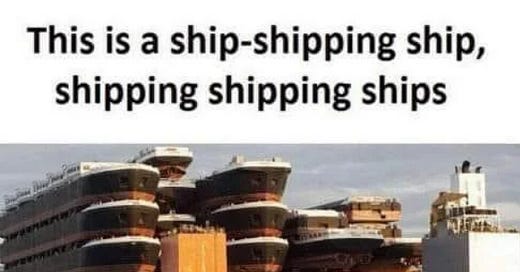I am again riffing on Peter Novick’s similarly titled article. I follow and endorse his explanation for the phrase, “my correct views” as perhaps one of the most whimsical usages, homages, and footnotes ever, expressing a perfect scholarly ethos: “I have borrowed (i.e., stolen) my title from Leszek Kodakowski, who once used it in response to E.P. Thompson. I’ve always loved it…” (1) “Correct” is a particular and important term in scholarship. It refers to the state of intellectual grace accorded to interpretations based on sound analysis and evidence. Thus, I can have “correct” views which cannot be assailed in terms of quality, but with which the reader is free to choose not to agree. I will on occasion here publish pieces on “my correct views,” not only to set a marker upon an issue, but to settle the meaning of the terms I use in my writings here.
Today, the subject is Grand Strategy. Yes, other people have their own correct views of Grand Strategy. However, because the enduring Anglo-American Grand Strategy of three centuries – to protect freedom of navigation at the global maritime chokepoints – will figure prominently on this site, and because there is no agreed understanding of the phrase, these are mine. Finally, I should note that generic, non-doctrinal terms are used here to facilitate broad understanding.
I am going to do this in the echelon format from the pinnacle enduring concern through the various levels of strategy. Not only does this perspective provide a clear vista, it is also “my correct” interpretation of how to understand the strategic to tactical relationship as flowing from the big picture at the apex and broken down and distributed across the structure of activity. National Interest, the sovereign raison d’etre, is at the top, it is the purpose of the Nation, and defines how the state will ensure its survival, security, and success. Unlike others who seat it further down the ladder, I attach Grand Strategy to the National Interest, making it a primal, almost abstract, key vision of how these three pillars of the national purpose will be achieved.
National Strategy defines how the whole of government, economy, and society are put to work according to the Grand Strategy in support of the National Interest. Defense Strategy is the broad military piece within National Strategy, directed at general threats, capabilities, sizing, etc., and serves the portfolio of foreign policies that reign in any given period. While the latter two are relatively stable, they can shift according to the political (domestic and international) winds, Grand Strategy should be fixed over time, brief and simple (that does not mean easy), and not subject to the whims of governing leadership. Finally, you have Military Strategy, which is an explicit formulation to serve a unique foreign policy.
So, US Grand Strategy is to maintain access to and freedom of navigation within critical maritime chokepoints as part of an international system that generally sustains freedom of the seas. This supports the purpose of the nation as a maritime trading power, first as a fledgling single coast chancer, then as a burgeoning continental producer and exporter, then as a bi-coastal continental operator, and finally as a global power and guarantor of the system.
And behold the global system:
This image is from the Shipping Visualization a project to collect and show all of the shipping in 2012. It is a staggering portrayal of our world at a scale we cannot normally grasp. Enjoy!
Notes
1 Peter Novick, “My Correct Views on Everything,” American Historical Review, June 1991, 699-703.





